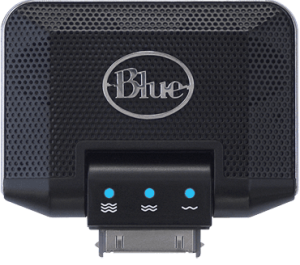As I go back listen to that first podcast I am overwhelmed with how terrible the recording quality is, especially compared to what I have today. You will also notice that a majority of the first podcasts were audio, now I am dealing a lot more with video. My development was purposeful, I started with audio technology developing my skill on Garageband to get the best possible edits. I even developed my own theme song (yah, I’m that nerdy). However, as time went on, I knew that the quality of my podcasts needed to improve or I would not be able to gain more listeners. So, I set out to research and learn all I could about sound recording.
Up to this point, I was using Audacity to record with my $10 micorphone on my PC, then transferring the mp3 file to my Mac to edit in Garageband. Awkward, but that was the accomodation I had to make with the equipment I had available. After a while, with all of the editing I had to do – at one point I had to take out sounds of my dog walking on the hardwood floor – I knew I needed a better set-up.
My frist step was the microphone, I started to go for better sound quality. I finished up with an AKG Perception 420 – a great mic with incredible sound quality. I ran it all through my Audiobox USB by PreSonus. This is where my frustration began as I had a great Dell computer I was handed with all of the bells and whistles for producing media content. However, when I went to record my audio all I got was single channel mono recording. I tried everything to fix this: uninstalling/re-installing software, downloading additional programs, buying other programs – I got nothing. Then, I hoooked everyhting up to my old iMac (2006 edition with Garageband) and with some fidgeting (I created two channels for left and right recording) it worked. Plugged it back into my PC – didn’t work – back to iMac, it worked. So, at that point, I began looking at a new Mac (it was 2009 after all, time to update).
With my technology issues solved, the Mac up and running, I now had to navigate interviews via the web. My easiest choice was Skype, I knew of a few people who were using Skype from blogs and I found a great set-up using Soundflower – a great plug-in for recording calls. It worked great at first, however, when it came time to do the actual interview on Skype, it stopped working as I could not hear my subject. With some stumbling I got it to work, but it was awkward, complicated and not efficient. I initially went to Audio hijack pro, an add on to Skype that worked okay, but what I noticed is that my caller could be hear really well, but I was not. Plus, I was getting the subject on the right channel, and myself on the left. This took all of my creativity in post edit to get a strong sounding podcast. Finally, I landed on Call Recorder and never went back. Call Recorder does everything I need, it automatically launches when I open up Skype and records the call in great quality. Plus, I have full spectrum recording – so no major post edits or assigning channels, it records exactly what I say and hear and I can put that directly into my podcast.
One recommendation with Skype, be aware of your internet speed/bandwidth. I say this as too much traffic on the net or slow internet will affect the quality of the recording. If your internet is slow or has too much traffic, the person coming through via Skype will sound disconnected and staticky. Keep in mind, I did podcasts with people in Hawaii and the Pacific Ocean could not ruin my recording – I just had to pay attention to make sure my subject was comging through loud and clear.
Now, with my home studio complete, I was getting a bit better and recording good quality podcasts at home. Now, what about some of the remote podcasts I woudl need to do? I go to these conferences and hear people speak, that would be the best time to get about five minutes from them to share some little bit of insight or a thought that educators could use. I played with a few mics for my iPhone (that was my device of choice as I did not want to buy a recorder). My problem, all of the mics on the iPhone were all mono, not good for recording at all. I finally landed on the Blue Mikey, a simple microphone that worked with my iPhone and gave me three options for recording: auditorium, speaking, or large audience/concert. Each level had a different filter on it to remove ambient noise, you can hear a sample recording I did at a packed Starbucks here. I now had my mobile recorder.
The more I do my podcasts the more I want to produce great sounding high quality products. Great sound quality has become a must for me and a constant work in progress.


One Response to “Podcasting Made Easy, Part II: Sound”